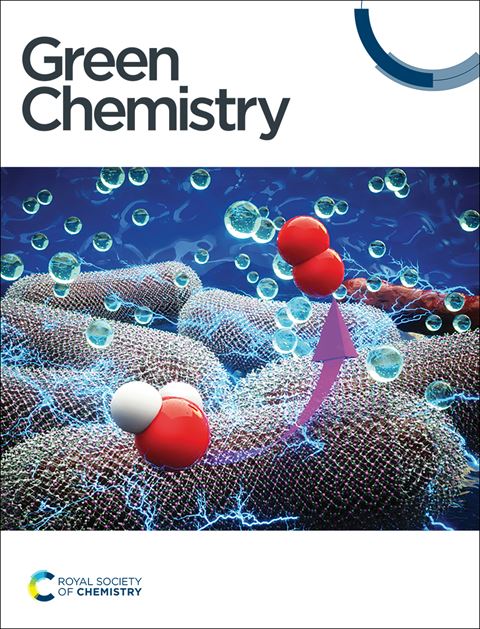Reactive laser ablation in liquids as a promising approach for repurposing effluents from former mining sites†
IF 9.3
1区 化学
Q1 CHEMISTRY, MULTIDISCIPLINARY
引用次数: 0
Abstract
The depletion of high-grade mineral deposits and environmental concerns associated with traditional mining practices necessitate alternative strategies for sourcing critical materials. This study explores the innovative use of reactive laser ablation in liquids (RLAL) to recover and repurpose valuable metals from effluents of the former Zlate Hory mine in the Czech Republic, transforming them into multielement nanoparticles (NPs) with broad industrial applications. By leveraging RLAL on two solid targets, Au and Fe, this work demonstrates the formation of multielement NPs that incorporate elements like Al, Fe, and Zn from the mine effluents. These NPs, characterized through various analytical techniques, exhibit unique structural and electrochemical properties. The incorporation of ferrimagnetic AlFe2O4 and spinel-structured Zn(Al1.9Fe0.1)O4 into the NPs enhances their catalytic potential, while the presence of Fe-based structures imparts magnetophoretic behavior, making them suitable for various technological applications, including catalysis and data storage. This approach not only provides a sustainable solution for recovering critical elements but also mitigates the environmental impact of former mining activities, aligning with circular economy principles. These findings highlight RLAL as a promising method for transforming waste into high-value nanomaterials, offering a new frontier in sustainable resource management.
液体反应激光烧蚀作为一种有前途的方法来重新利用从以前的矿区流出物
由于高品位矿藏的枯竭和与传统采矿做法有关的环境问题,必须采用其他战略来采购关键材料。本研究探索了液体反应激光烧蚀(RLAL)的创新应用,从捷克共和国前Zlate Hory矿的废水中回收和重新利用有价金属,将其转化为具有广泛工业应用的多元素纳米颗粒(NPs)。通过利用RLAL对两个固体目标(Au和Fe)的影响,这项工作证明了多元素NPs的形成,其中包括来自矿山废水的Al、Fe和Zn等元素。这些NPs通过各种分析技术表征,具有独特的结构和电化学性能。铁磁性的AlFe2O4和尖晶石结构的Zn(Al1.9Fe0.1)O4加入到NPs中增强了它们的催化潜力,而铁基结构的存在赋予了它们的磁泳行为,使它们适合于各种技术应用,包括催化和数据存储。这种方法不仅为回收关键元素提供了可持续的解决方案,而且还减轻了以前采矿活动对环境的影响,符合循环经济原则。这些发现突出了RLAL作为一种将废物转化为高价值纳米材料的有前途的方法,为可持续资源管理提供了一个新的前沿。
本文章由计算机程序翻译,如有差异,请以英文原文为准。
求助全文
约1分钟内获得全文
求助全文
来源期刊

Green Chemistry
化学-化学综合
CiteScore
16.10
自引率
7.10%
发文量
677
审稿时长
1.4 months
期刊介绍:
Green Chemistry is a journal that provides a unique forum for the publication of innovative research on the development of alternative green and sustainable technologies. The scope of Green Chemistry is based on the definition proposed by Anastas and Warner (Green Chemistry: Theory and Practice, P T Anastas and J C Warner, Oxford University Press, Oxford, 1998), which defines green chemistry as the utilisation of a set of principles that reduces or eliminates the use or generation of hazardous substances in the design, manufacture and application of chemical products. Green Chemistry aims to reduce the environmental impact of the chemical enterprise by developing a technology base that is inherently non-toxic to living things and the environment. The journal welcomes submissions on all aspects of research relating to this endeavor and publishes original and significant cutting-edge research that is likely to be of wide general appeal. For a work to be published, it must present a significant advance in green chemistry, including a comparison with existing methods and a demonstration of advantages over those methods.
 求助内容:
求助内容: 应助结果提醒方式:
应助结果提醒方式:


